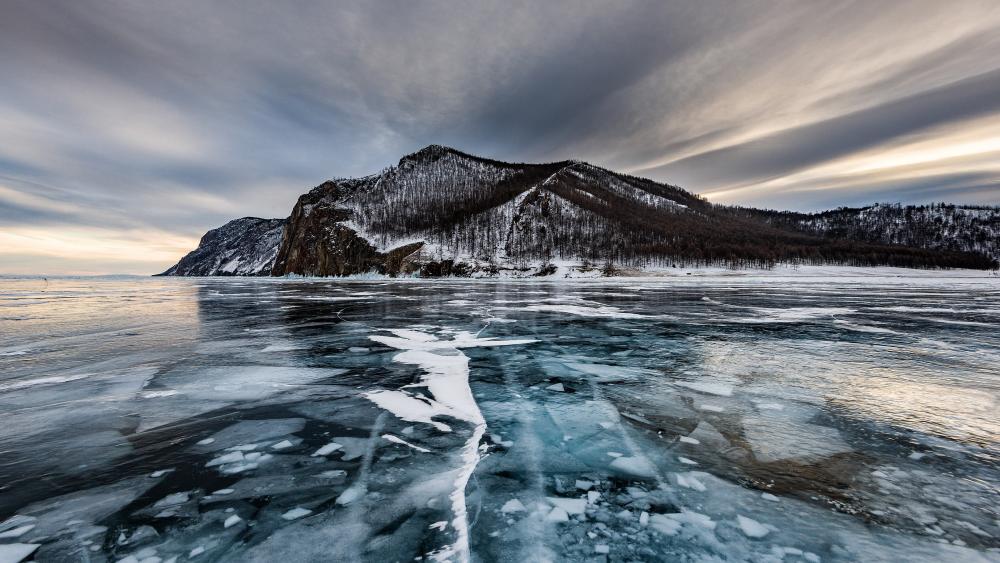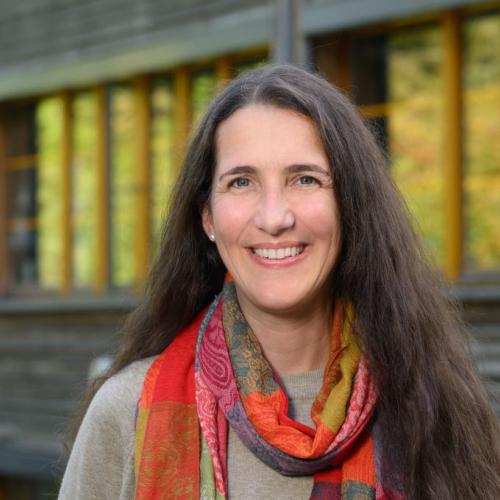
Lake Baikal is covered by ice for almost four months a year. When the ice disappears, the lake’s food web changes – as for many freshwater systems worldwide. | Photo: © Sergey Pesterev / Wikimedia Commons
Together with colleagues from Russia and the USA, IGB researcher Sabine Wollrab has developed a seasonally forced food web model that takes into account the change between ice-covered and ice-free phases. The model seeks to shed light on the impact of a gradual decrease in ice cover duration on the spring algal bloom, seasonal plankton dynamics, and consequently, the entire food web.
The seasonal interplay between phytoplankton and zooplankton
The model predicts that zooplankton development, which is dependent on available phytoplankton biomass during spring bloom, has a major impact on seasonal dynamics in the following year. “A strong winter algal bloom in spring results in intensive zooplankton development. This increases grazing pressure not only on summer phytoplankton in the same year, but also on winter phytoplankton in the subsequent winter, restricting its development. This may delay – or even prevent – the occurrence of a winter algal bloom the following spring, which provides less food for zooplankton. Reduced zooplankton development leads to reduced grazing pressure on phytoplankton, paving the way for a strong winter algal bloom in spring the next year, restarting the cycle,” explained Sabine Wollrab. Such multi-year cycles are predicted by her model over wide ranges of ice cover duration.
“We can see how these multi-year dynamics change as winters get warmer,” the scientist remarked. “In particular, the winter algal bloom in spring is heavily dependent on ice cover duration. In this case, as ice cover duration declines, the model predicts a change from annual, pronounced spring blooms to an absence of spring blooms every second year, and finally the complete disappearance of winter algal blooms.” Thereby, even small changes in ice cover duration can – due to the complex interplay between phytoplankton and zooplankton – be followed by abrupt shifts in seasonal plankton dynamics, referred to as regime shifts.
Verification of model predictions using the example of Lake Baikal
The researchers compared the model predictions of plankton dynamics with long-term data from Lake Baikal in Siberia, Russia. In the last century, the average ice cover duration for Lake Baikal decreased from 120 days to just 105 days per year. As the data analysis shows, the seasonal dynamics, and in particular the frequency of intense spring blooms, changed significantly in the period from the 1950s to the 1990s. Moreover, the timing of the spring bloom over the course of the year has been delayed by almost one month towards summer.
This decline particularly affects Lake Baikal’s winter specialists, primarily endemic diatom species. “We were able to show that the declining ice cover duration has led to a regime shift – from regular, pronounced spring blooms dominated by endemic winter plankton species in the 1950s to a higher frequency of years without any pronounced winter plankton blooms and with delayed spring blooms in the 1990s,” Sabine Wollrab summarised.
A model with potential
“Until now, our mechanistic understanding of seasonal plankton dynamics was based primarily on non-dynamic models such as the Plankton Ecology Group (PEG) model, which assumes annually recurring dynamics,” the researcher criticised. And yet interannual couplings are essential to understand the effects of environmental changes on biotic interactions.
“Our findings can be used to further develop the established Plankton Ecology Group (PEG) model for seasonal dynamics in lakes,” Sabine Wollrab anticipated. Further developments of the model will enable the investigation of changes in the plankton dynamics of lakes in temperate zones, where ice cover duration is much shorter and occurs less frequently with climate warming.





